The Eastern Hulks of Hooe Lake, Plymouth
by Martin Read, Plymouth University – September 2011
The remains of hulks, or abandoned watercraft, located along the river edge and the intertidal zone are an important component/evidence of our maritime past. Often they represent the only remains of types of boats that are no longer afloat or very rare.
In this article I only want to look at those at the eastern end of the Lake, close to the ‘Castle’, and will do another article on the others in the future. None of the boat remains has the name of the vessel written on it, so our knowledge of them comes from the memories of those who have lived around Hooe Lake before or when they were abandoned. If you have information that might help with the history of any of the hulks I would be very interested.
I first started to look at the hulks in Hooe Lake back in 1997 when a group of Plymouth University students recorded the positions of some of them. Over the years several students as well as members of the local Plymouth and District Archaeological Society have surveyed and recorded many of the hulks. Since 2006, as Hooe Lake provides an excellent environment to introduce this subject, I have used the hulks to teach archaeological skills to students from both Plymouth and Bristol Universities. This year we will be spending most of the mornings of the w/c 7th November with first year students teaching them survey and recording on the Rodger and trying to get them to observe some of the evidence that it shows if they look with a critical eye. This year I also have an undergraduate student doing her third year project on the archaeology of Hooe Lake.
Lost Ships of the West Country
The book with the most information on these hulks is by Martin Langley and Edwina Small Lost Ships of the West Country, published in 1988 by Stanford Maritime, which covers most of the South West estuaries. They interviewed local people and carried out some of their own research. Unfortunately, occasionally this information is wrong or they followed the wrong lead, but it is still the best starting point. There are copies of the book in local libraries.
Over the years Plymouth University students have found and recorded over 100 hulks on the estuaries in Plymouth and South Devon. Hooe Lake is important as it has the largest concentration of hulks west of the River Exe, with evidence for between fourteen and seventeen vessels. Some of these are now no longer visible, being under reclamation, or have been almost totally removed or the remains are now hidden under the mud, but there are still some interesting boats with varied and fascinating histories.
Nobody has so far been able to tell me the name of the former French trawler which appeared beside the remains of the quay to the west of the ‘Castle’ in about 1998. I remember that for some years afterwards whenever I visited there seemed to be less and less as bits were sawn off or salvaged. Now basically a bare shell remains, showing a good example of a cross section of a boat, with many of the structural elements visible. Salvage seemed to stop after a while and a few years ago it was partly set on fire. I understand that many locals were not pleased with this addition to the Lake and wanted it removed. I don’t know how people feel about it now, but I think it adds some interest to the Lake, in not being mud…
Does anyone know what this trawler was called?
Tamar Sailing Barges
To the north, beside the French trawler can be seen the slender remains of three vessels, believed to be an unidentified Tamar Barge, the Pearl and the Wendew. They were apparently formerly moored alongside each other, floating at high tide, until they gradually fell into decay and sank. In 1988 both the stem and sternposts of the unidentified Tamar barge were still standing, but by 1999 both of these had gone. Today the base of the stem and the stern posts along with some of the ribs are clearly visible showing the outline of a vessel over 70 feet in length.
Tamar Sailing Barges (Thames sailing barges are a similar barge-type) were a type of wooden merchant sailing vessel, usually smack- or ketch-rigged, operating both within the Tamar system and along the south coast of Devon and Cornwall between Salcombe and the Lizard carrying almost any goods they could. They were built at ports along the coast and in Plymouth, Stonehouse, Devonport and Calstock. Some continued working into the 1920’s or 1930’s, many transporting roadstone and gravel until replaced by lorries after WWII and broken up or abandoned. Two former hulks, the Shamrock (formerly abandoned on Hooe Lake and now at Cotehele Quay) and the Lynher (abandoned in Poldrissick Quarry in Cornwall), have been restored to sail again.
Next to the remains of the Tamar Barge is another hulk now in a similar state, but considerably larger. This was identified by Langley and Small as being another Tamar Barge called Pearl, based in Saltash Passage. The remains of the keelson (the internal equivalent of the keel) can be seen along most of the length, together with ribs, internal planking and the base of the stem and stern posts. Their research found a Tamar Barge with this name built in 1840, but they gave no further details. However, I think they may be wrong. The three boats seems to have been abandoned in Hooe Lake post the Second World War and it is unlikely a working boat would have lasted over a century before being broken up. It is also too long, at over 100 feet (we recorded 107 feet but it could have been original up to 10 feet longer), to be a Tamar Barge (which were generally up to 60-70 feet long, the Shamrock is only 57ft).
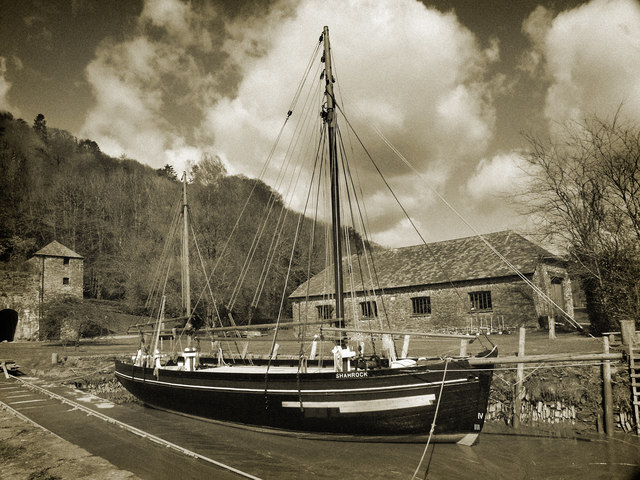
'Shamrock' formerly abandoned on Hooe LakeA is 57ft ketch-rigged vessel of 1899, now restored to sea-going capability under the supervision of her co-owners (with the National Trust) the National Maritime Museum. Seen here in her dock at Cotehele in 2003 she could have been spotted in the 2010 TV series "The Edwardian Farm" making occasional voyages up to Morwellham Quay. © Copyright Roger Lombard
However there is a record in the 1880s of a one-masted sloop called Pearl, based at Saltash Passage, whose joint owners were William Stibbs, master mariner, and Sarah Stibbs, a widow. William Lucock was her master. There was also a cutter-rigged vessel named Pearl built in Stonehouse in 1896. In 1914 this Pearl was bought by Jefford and Son, quarry owners, and used in the St Germans river stone trade, with Abram Crossley as her master. She was still a working boat in 1942, when given an auxiliary engine. This boat was only 52 feet long between stem and stern posts, which is far too short to be the middle vessel. Does anyone have any details of these boats or photographs of them when they were more intact?
To the north of these two are the remains of the ‘mule’ class Brixham Trawler Wendew. This was a ketch built by Jackman & Sons in Brixham between 1912 and 1915 with the original portmark was BM119. The first owner was Daniel Friend of Brixham and then J.T. Crocker of Brixham from 1927. In 1940 he sold it to C.R. Cload of Plymouth and on 3rd July 1950 was apparently broken up.
Compared to the largest Brixham trawlers, termed ‘Big Sloops’, which could be 70 tons gross weight, ‘mule’ class trawlers (named probably from their hybrid rig derivation) were medium sized, at under 40 tons, and were generally under 60ft overall length. The Wendew was originally 62 feet long and 35 tons gross weight. Using beam trawls it would have fished out into the English Channel. The Wendew was owned for a time by ‘Mad Jack’ Crocker who was completely oblivious to danger and would go to sea in any weather. Sometime after the boat came to Plymouth she was made into a houseboat by her owner Eddie Blackler. Much of the eastern end of Hooe Lake appears to have been used by houseboats for a while. Did anyone who lived on a houseboat in Hooe Lake have memories that they would like to share?
Brixham trawlers were mostly made by two shipbuilders, Uphams and Jackmans. Whilst there are several Upham boats still afloat (the Pilgrim was being restored in Mashfords at Cremyll for several years), there does not appear to be any boats from the Jackman yard still on the water. Incidentally the hulk on the Western side of the Laira, which can be seen from Embankment Road, the Antelope, is also a Jackman-built ‘mule’ class Brixham trawler, which has severely deteriorated in the last 20 years.
The remains of the Wendew cannot now be clearly distinguished as being a boat. A vague outline of the hull can sometimes be seen at half-tide from seaweed floating from the few remaining ribs. Closer examination shows that part of the keelson and some of the ribs are still present with concrete ballast in between. Concrete had been used as ballast in boats since the mid-19th century.
Does anyone know the names of these vessels and when they first came to Hooe Lake? Were they there prior to WWII?
Arthur
Just behind these hulks are the skeletal remains of the timber lighter (dumb barge) Arthur. The size and sheer presence of this hulk are unmissable and I have lots of photographs of wildlife using this as a safe place to settle. This dumb (i.e. unpowered) barge was owned by the timber importers Bayly’s, formerly on the north side of Hooe Lake, and operated with the aid of their small steam tug Alice. The almost complete framework still exists, though much of the outer planking had already gone or been removed by 1988.
The Roger/Rodger
On the south shore of Hooe Lake, to the west of the ‘Castle’, are the remains of the Roger/Rodger. This still had a reasonably complete shape in 1998 extending up to the futtocks, but has since been burnt and is starting to disintegrate.
Apparently she was sold to a Plymouth fisherman in May 1974 and then on to a yachtsman who had Mashfords in Cremyll carry out some modifications but, when they weren’t paid, sold her for conversion to a houseboat.
According to Langley and Small she was originally a trawler built in Nieuport, Belgium in 1947. This was then sold to Brixham in 1966 and fished with the portmark BM172. They give the original length as 60 feet with 27.23 tons gross. However they also describe her as being ‘a small steel-built motor trawler’ even though it is clearly of wooden construction. Either this is just a mistake made during editing or they have the wrong boat!
The lower hull remains with ribs and bottom still intact. Concrete ballast is present along its’ length, between the ribs and above the keel. The rudder and counter at the stern of the vessel have fallen away from the hull and lie scattered around. The present length is just over 15m or 49 feet. If you add on a bit for the counter and the bow, this could make 60 feet.
The shape and structure of the hulk also fits with it being a trawler, with the remains of wooden bins used to hold the fish in the front part of the vessel and a massive pair of wooden engine mounts with bent over bolts for the large engine needed to pull the trawl net at speed through the water. The large diameter hole for the propeller shaft also fits with this. The engine that can be seen on the hulk is too small to have powered a trawler and is most probably a generator belonging to the houseboat. There are also signs of the boat being refitted as a houseboat if you look closely enough.
What memories or photos do you have of the hulks in Hooe Lake?
Please post your comments below or email info@hooelake.org
Marine Schools & Courses
School of Marine Science
Ocean Science with Plymouth University
Ocean Exploration with Plymouth University
Marine Archaeology Masters with Bristol University
Martin Read can also be contact directly by writing to the School of Marine Science and Engineering, University of Plymouth, PL4 8AA or emailed at mread@plym.ac.uk.
Category: History

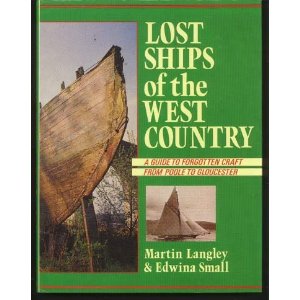
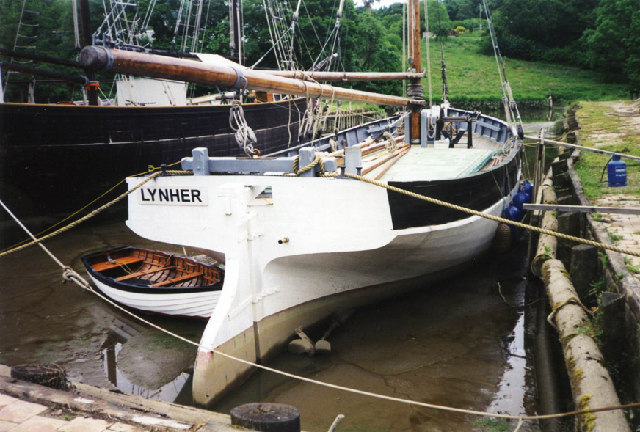





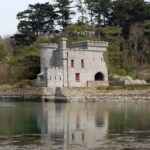

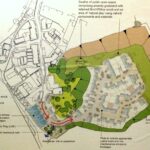
There are two existing sailing trawlers still from Jackmans Yard in Brixham. They are BM 313 DEODAR and KENYA JACARANDA.
You will find more info about DEODAR on the home page.
She is fully restored and in perfect sailing condition.
Have been visiting Brixham three times in present years 1996, 2005 & 2015.
It would be nice to see some information boards about the wrecks, people are always asking about them.
I remember the vessels now interestingly identified as Tamar Sailing Barges next to the french trawler, in my childish innocence when I used to holiday here in the seventies, I used to call them ‘viking ships’, because of what looked like high stem and stern posts to a child, interesting they have names now, as I have photographed their remains many times, trying to work out what they were. But I did hear, so as whether it is truth or not is open to confirmation that the demise of the stem and stern posts was due to vandalism conducted by an authority when they sought to ”beautify” the lake in an attempt to interest developers to make the into a marina to service yet more of Plymouth’s plastic waterfront.
Hello everyone,
To support Martin’s plea for information…
I’m studying the hulks with Martin for my third year project, and am very keen to speak with anyone who might have information on how the lake has changed over the last century – I’m interested in memories, stories, and even hear-say to support the work I’m doing. If you’re reading this article and would like to help, please email me – rachel.allin@students.plymouth.ac.uk
All info would be much appreciated!
Thanks,
Rachel
Fascinating article. My Grandfather, George Henry Warley, was the Master of the tug Alice in the 1930s and although he died in 1937 it was passed down in the family that he towed the Arthur to its final resting place. Unfortunately all his log books and other papers were lost in the last war.
I’m glad that the information in the article is being recorded.
Fascinating. I’ve just moved into the area from the Midlands and was wondering what the hulks were about. Thanks very much for the information!